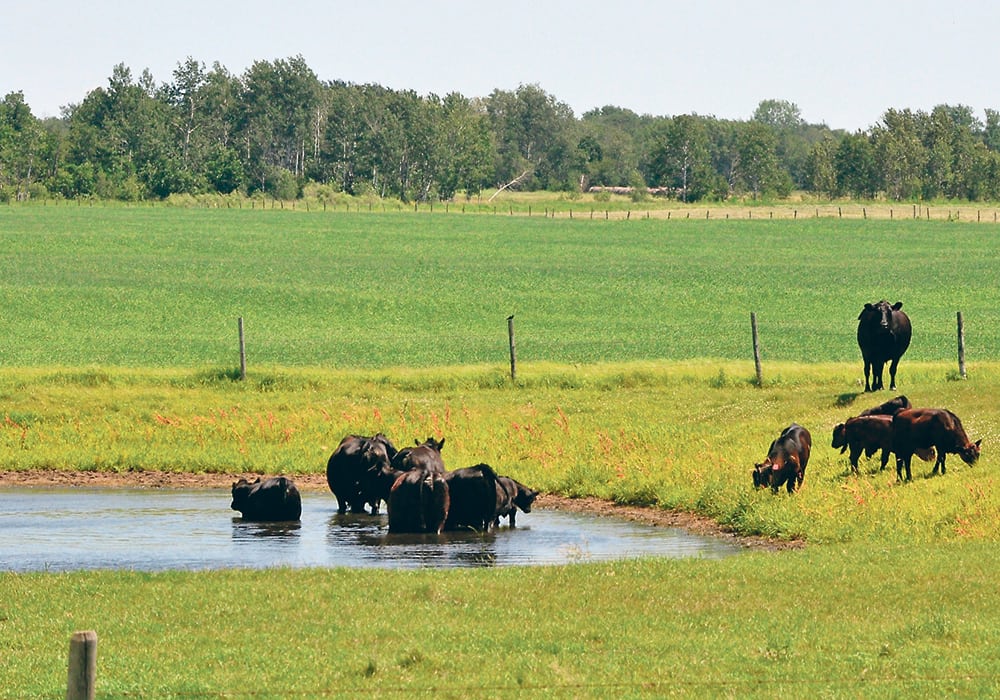Cattle can adapt to water with high sulfate levels, but there is a limit on how much they can tolerate
All animals need water, but in addition to lack of water, poor water quality can also cause disasters.
Cattle need about 30 kilograms of water per day but requirements can vary according to the animal’s age, life stage and the weather. They need more water as temperatures rise past 27 C.
Cattle on grass that have direct access to a dugout gain an average of 2.14 pounds per day whereas those receiving well water can gain 2.67 lb. per day.
White rings around a dugout or other water body indicate high sulfates, said Nathan Erickson of the Western College of Veterinary Medicine in Saskatoon. These conditions are common in Saskatchewan.
Read Also

House ag committee to undertake several studies
The House of Commons standing agriculture committee has set its agenda for the coming months. Members began the fall sitting with a two-hour update on international trade
Cattle can adapt to the water but there are limits as to how much they can tolerate.
“Cattle will develop a tolerance over time and they will adapt to high-sulfate water, so what may be poor water in one region may be acceptable in another region,” he said at the University of Calgary veterinary summit held June 19-21.
During wet years, there is movement of salts from the soil to the water. Salt concentration in water increases faster than it can equalize during hot weather with extreme evaporation.
“During dry periods, which is normal for Western Canada, we are going to have a buildup of salts that are going to move from the water to the soil and move back and forth,” he said.
“Over time, this should start to equalize in areas around the water but it takes quite a bit of time for that to happen,” he said.
Water with high-sulfate levels also affects copper absorption rates. Cows younger than 10 years are likely to not get pregnant if they suffer from a copper deficiency.
Water quality can be assessed by a laboratory or by using electrical conductivity to measure the salts. However, tests are expensive.
Last year, more than 300 cattle died suddenly after drinking contaminated water at a community pasture near Shamrock, Sask.
“We need to make sure that we remember this from our day-to-day production and build up that memory within our producers. This is not the first time we have had cattle die because of high salts but is the biggest die-off,” he said.
Additional information on water testing may be seen at bit.ly/WaterSystemCalculator.


















